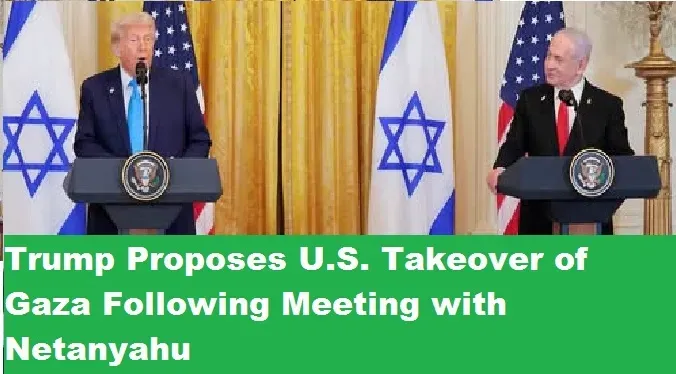Trump Proposes U.S. Takeover of Gaza Following Meeting with Netanyahu
Washington, D.C.: In a bold statement during a joint press conference with Israeli Prime Minister Benjamin Netanyahu, former President Donald Trump suggested that the United States should "take over" the Gaza Strip and oversee its reconstruction.
"The U.S. will take over the Gaza Strip, and we will do a job with it, too. We'll own it," Trump declared. He emphasized that this would include dismantling unexploded bombs, clearing debris, and developing economic opportunities in the region.
A Controversial Proposal
Trump’s comments come amid ongoing discussions about a long-term resolution to the Israel-Hamas conflict. He reiterated his stance that Palestinians should relocate to other Middle Eastern countries, such as Egypt and Jordan—an idea that has been widely rejected by both the Palestinian leadership and the governments of those nations.
"It should not go through a process of rebuilding and occupation by the same people that have fought for it, lived there, and died there," Trump said, suggesting that Gaza's two million residents should seek refuge elsewhere.
Netanyahu praised Trump as "Israel's greatest friend" and suggested that the U.S. president’s vision could be a turning point in the region.
Opposition and Global Reactions
Egypt and Jordan swiftly rejected the idea of absorbing Palestinian refugees, while Palestinian representatives at the United Nations urged world leaders to respect their people's right to remain in their homeland.
Gazans also voiced strong opposition. "Trump thinks Gaza is a pile of garbage—absolutely not," said Hatem Azzam, a resident of Rafah.
Despite the controversy, Trump claimed credit for brokering the initial phase of the Israel-Hamas ceasefire, which has led to the release of hostages on both sides.
The Path Forward
Netanyahu expressed cautious optimism about moving to the second phase of the truce, with negotiations ongoing in Qatar. Hamas representatives stated that future discussions would focus on "shelter, relief, and reconstruction."
Meanwhile, tensions remain high. While the ceasefire has allowed humanitarian aid to enter Gaza, Israel continues operations against militants in the West Bank, leading to further casualties.
As the situation unfolds, Trump’s proposal raises significant questions about U.S. involvement in Gaza and the future of the Palestinian people.
This version keeps the key details while making it more engaging and structured. Let me know if you’d like any further refinements!






0 Comments